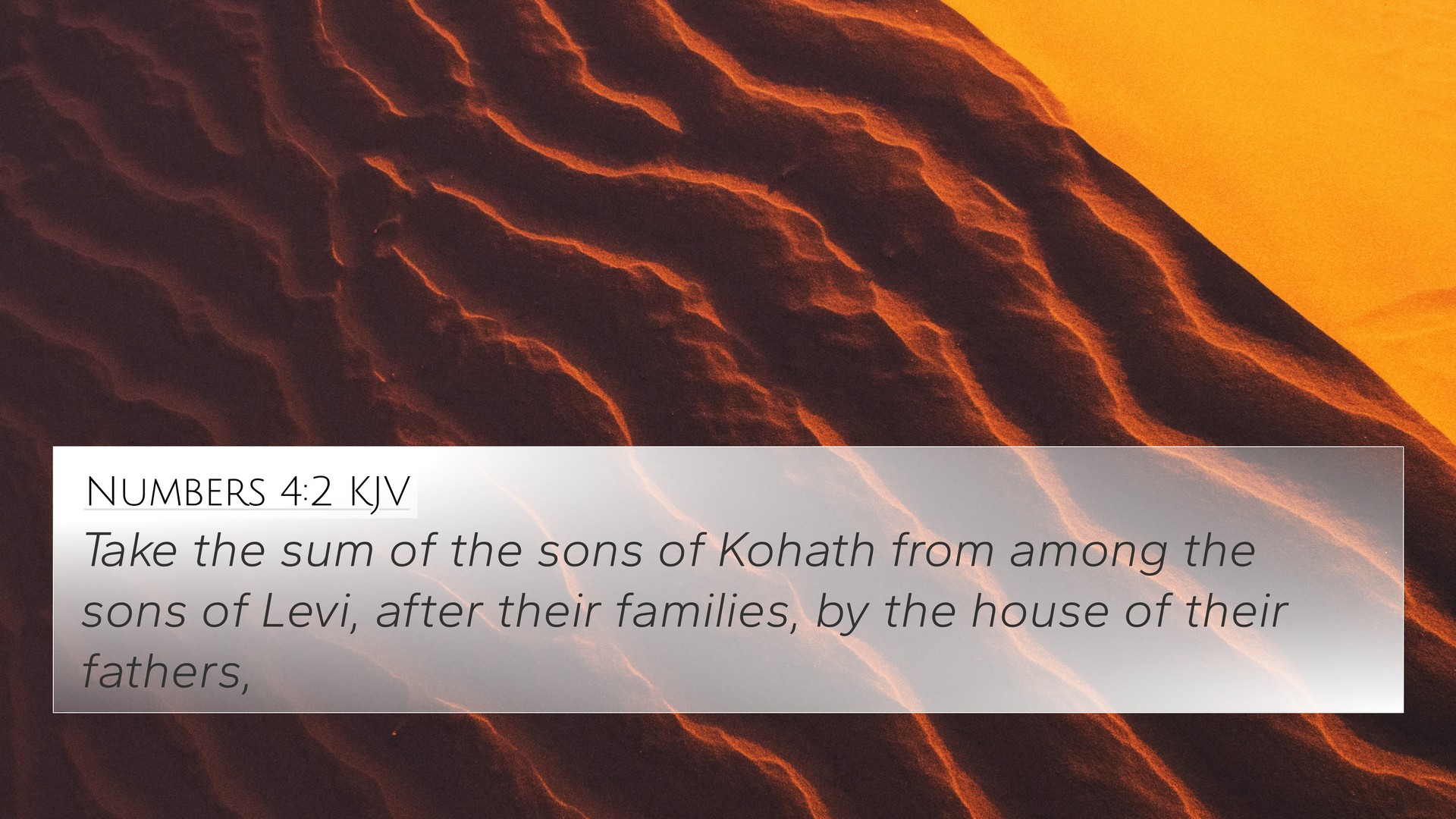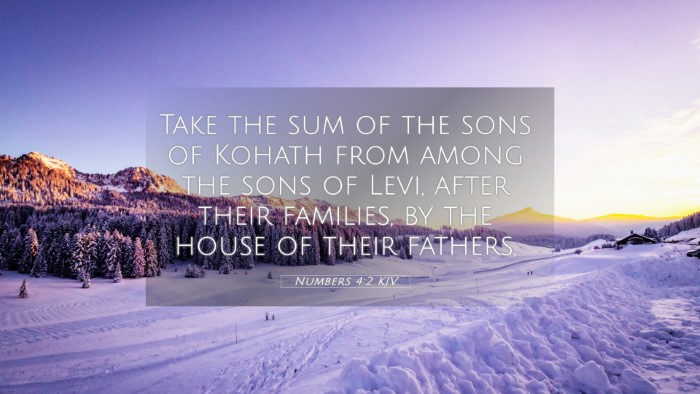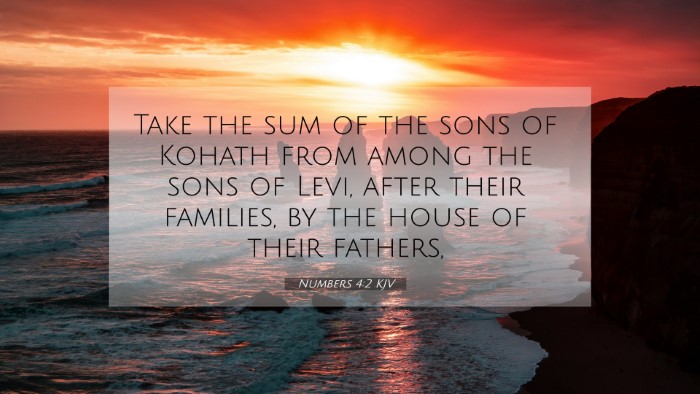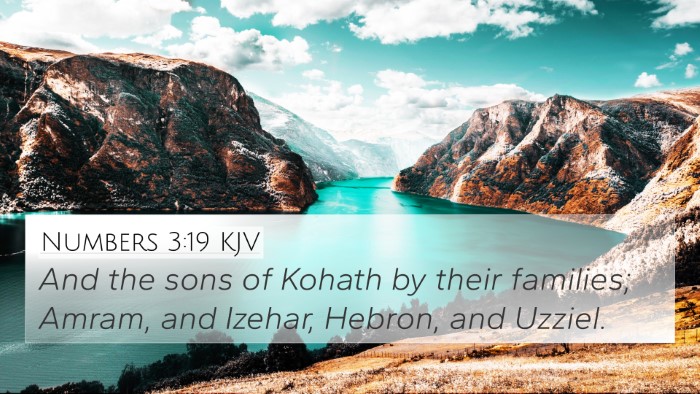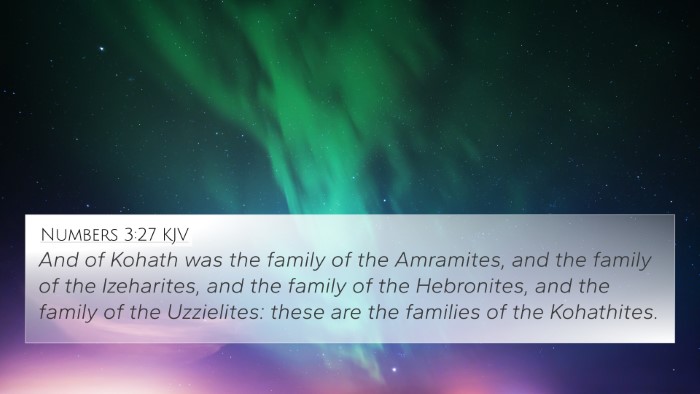Understanding Numbers 4:2: A Comprehensive Analysis
Numbers 4:2 states: "Take a census of the sons of Kohath from among the sons of Levi, by their families, by their fathers' houses." In this verse, God commands Moses to conduct a census of the Kohathites, one of the clans of the Levites, focusing on their family divisions.
Verse Meaning and Context
The verse is situated within a broader context where God provides detailed instructions regarding the duties and organization of the Levites, particularly concerning the transport of the holy things of the tabernacle.
- Historical Context: The Levites were chosen for specific duties in the Tabernacle service, setting them apart for sacred tasks.
- Significance of Census: The census signifies God's order and organization, ensuring each tribe and family understood their responsibilities.
Insights from Public Domain Commentaries
Matthew Henry's Commentary:
Henry emphasizes the importance of God's calling the Kohathites specifically, highlighting their unique role in handling the sacred articles, which underscores the sanctity of God’s service.
Albert Barnes' Notes:
Barnes notes that by counting the Kohathites, the Lord demonstrates a sense of structure among His people, as it ensures that the most sacred items, including the Ark of the Covenant, are handled appropriately.
Adam Clarke's Commentary:
Clarke elaborates on the necessity of carrying out God’s instructions meticulously, indicating that the Levites must recognize their exclusive responsibilities in the worship system.
Inter-Biblical Connections and Themes
This verse can be cross-referenced with the following scripture passages that elucidate its themes:
- Exodus 28:1: The appointment of Aaron and his sons as priests, showing division of roles within the Levitical responsibilities.
- 1 Chronicles 23:6: Illustrates the division of the Levites into various clans, aligning with the census directive.
- Numbers 3:17-39: Provides background on the Levite families, further specifying each clan’s roles.
- Hebrews 7:14: Discusses the lineage of Christ as arising from Judah, contrasting the Levitical priesthood.
- Luke 3:23-38: Traces Jesus’ genealogy, establishing connections to the Levitical lineage.
- Leviticus 8:14-15: Addresses the sanctification of the priests, highlighting the sacred service aspect.
- Ephesians 4:11-12: Talks about the roles in the church, drawing parallels to the division of labor among the Levites.
Thematic Connections Between Bible Verses
Connections can be made thematically through:
- Divine Order: God's instructions embody structure—essential for a functional community.
- Servanthood: The call to serve with reverence signifies a broader biblical theme of God’s people committing to sacred duties.
- Holiness: The items handled by the Kohathites were marked by holiness, a recurring theme in the Bible indicating God’s distinctiveness.
Conclusion
In summary, Numbers 4:2 establishes a foundation for understanding the organizational structure of the Levitical priesthood and sets a precedent for the way God’s people are called to serve. By analyzing parallel scriptures and employing tools for cross-referencing, we can appreciate the intricate designs of God's covenant community.
Reflection on Inter-Biblical Dialogue
Engaging in comparative Bible verse analysis allows believers to see the continuity of God's plan throughout scripture. Each passage serves as a piece of the larger narrative, helping to identify connections between the roles of the Levites in Numbers and the church today.
